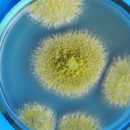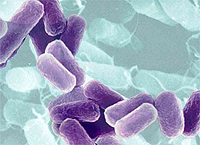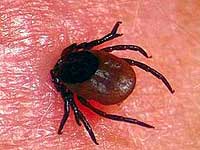What is dysentery? How dysentery is manifested? How to diagnose and treatment of dysentery? Answers to these questions you will find in the article.
Content
Dysentery
Dieseneria - infectious disease characterized by damage to the gastrointestinal tract, predominantly colon.
Dysentery cause bacteria of Schigella. With the destruction of microbes
Toxin is distinguished, which plays a big role in the development of the disease and
determines its manifestations.
Dysentery pathogens differ in high survival in
external environment. Depending on the temperature and humidity conditions, they
persist from 3-4 days to 1-2 months, and in some cases up to 3-4
months and even more. Under favorable conditions, Schigellas are capable of
breeding in food (salads, winegrates, boiled meat,
minced stuffing, boiled fish, milk and dairy products, compotes and kissels).
Dieseneria is transmitted only from a person through food contaminated by feces, water, as well as in contact.
The source of the causative agent of infection during dysentery is patients, and
also bacteria carriers that highlight Shigella to the external environment with
feces. Patients with dysentery infectious since the beginning of the disease. Duration
selection of pathogen patients, as a rule, does not exceed the week, but
can be delayed to 2-3 weeks.
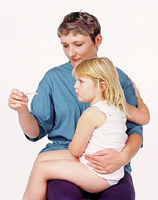
The greatest sensitivity to infection in persons with a group of blood A (II).
The leading factor in the development of the disease is the admission of bacterium poisons
in blood. First of all, the nervous system is affected as well
Cardiovascular system, adrenal glands and digestive organs.
Shigella can be in the stomach from several hours to
several days (in rare cases). Overcome acid barrier
Stomach, Shigella gets into the intestines. In the small intestine they are attached
to the intestinal cells and highlight toxin, which causes an increased
secretion of liquid and salts in the intestinal lumen. Shigella actively
moved by causing an inflammatory process in a small intestine that
Supported and exacerbated by the action produced by Schigella
Toxin. Toxin Shigell, enters the blood and determines the development
Inxication.
In the colon, Shigella gets somewhat later, but massively. This leads to a more significant action of Shigell toxins.
Recovery in dysentery is usually accompanied by liberation
The organism from the pathogen. However, in case of insufficiency of the immune system
Cleansing the body from the causative agent is dragged up to 1 month and more.
It is formed by the carriage, and the part of the ill-faced disease acquires
Chronic flow.
After the suffering disease, a short immunity is formed.
The incubation period is 1-7 (on average 2-3) days, but can be reduced to 2-12 hours.
Form, option and severity of the flow of dysentery depend on the paths and methods
infection, the number of microbes in the body, level of immunity
organism.
How dysentery is manifested
The disease begins
fast. At the beginning, the syndrome of general intoxication is developing,
characterized by increasing body temperature, chills, feeling heat,
breaking, decreased appetite, headache, decrease in arterial
Pressure.
The defeat of the gastrointestinal tract is manifested by pain in
stomach, first stupid, spilled throughout the belly having a permanent
character. Then they become more sharp, grasp,
Local in the lower parts of the abdomen, more often on the left. Pain usually
amplified before the intestinal emptying.
With a light course of illness, the fever is short-lived, from
a few hours to 1-2 days, body temperature, usually,
rises to 38°WITH. Patients worried moderate abdominal pains, in
Basically before the act of emptying the intestines. Estiments have
Cashitz-shaped or semi-liquid consistency, defecation frequency up to 10 times
per day, mix of mucus and blood is not visible. Inxication and diarrhea
persist within 1-3 days. Complete recovery occurs through
2-3 weeks.
Medium-heavy course of the disease - the beginning of the disease is fast.
Temperature of the body with chills rises to 38 ~ 39°C and keeps on this
level from a few hours to 2-4 days. Patients are bothering common
weakness, headache, dizziness, lack of appetite. Intestinal
disorders, as a rule, are joined in the next 2-3 hours from
The beginning of the disease. Patients appear periodic gravity pain
At the bottom of the abdomen, frequent false urges for defecation, feeling
incomplete act of defecation. Stool frequency reaches 10-20 times in
day. Megetive feces, often consist of one plumbings
blood. Increased irritability, skin pallor. Language
covered with thick white blooming, dryish. Inxication and diarrhea
continue from 2 to 4-5 days. Full healing of the mucous membrane
intestines and normalization of all the functions of the body occur no earlier than 1-1.5
months.
The difficult course of dysentery is characterized by very fast
the development of the disease, sharply pronounced intoxication, deep
Violations of the cardiovascular system. Disease
It begins extremely fast. Body temperature with chills quickly rises
up to 40°C and higher, patients complain of severe headache, sharp total
Weakness, increased zray, especially in limbs, dizziness
When you get up with bed, the absence of appetite. Often appear
nausea, vomiting, IKOT. Patients bother abdominal pain,
accompanied by frequent urges for defecation and urination. Chair
more than 20 times a day, often the number of defecations is difficult to count («chair
Without a bill»). The period of the sickness of the disease lasts 5-10 days.
Recovery occurs slowly, up to 3-4 weeks, full normalization
The intestinal mucosa occurs after 2 months and more.
The diagnosis of chronic dysentery is established in case the disease lasts more than 3 months.
Among the complications of the disease
The most frequent are: infectious toxic shock,
Infectious toxic damage to the nervous system, peritonitis,
pneumonia.
How to diagnose dysentery
Diagnostics of dysentery
Based on the results of the survey of the patient. Great
Diagnostic value has a feast inspection at which you can
Detect a mix of blood mucos. Laboratory confirmation
Dysentery is carried out by bacteriological and serological methods.
Bacteriological method (Schigell Sewing from Ferrence) at 3x
The study ensures confirmation of the diagnosis in 40-60% of patients.
Accelerated diagnosis of acute intestinal diarrheal infections can
to detect antigens of pathogens and their toxins in
biosubstrats - saliva, urine, feces, blood. To this end use
Immunological methods with high sensitivity and
Specificity: Immuno-enzyme analysis (ELISA), agglutination reaction
latex (Ral), reactions of coaggglutination (RKA), immunofluorescence (reef),
polymerase chain reaction (PCR).
How to treatment with dysentery
Treatment of patients
Dysentery should be comprehensive and strictly individualized.
Bed regime is needed, as a rule, only for patients with severe
forms of illness. Patients with medigative forms are allowed to go out
to the toilet. Patients with light shapes are prescribed to the chamber mode and therapeutic
physical Culture.
One of the most important terms in integrated intestinal therapy
Patients are therapeutic nutrition. In the acute period with significant
intestinal disorders prescribe table number 4; With improved state,
decreasing intestinal dysfunction and appetite patients
translated on table number 2, and in 2-3 days before discharge from the hospital - on
Total table.
Prescribe a patient an antibacterial drug is necessary with
Accounting for information O «territorial landscape of drug sustainability»,
T.E. Sensitivity to Him Shigell, allocated from patients in this
locality recently. Combinations of two or more antibiotics
(chemotherapy) are prescribed only in severe cases.
The duration of the treatment of dysentery is determined
improving the condition of the patient, normalization of body temperature,
decrease in intestinal disorders. With a moderate form of dysentery
The course of therapy may be limited to 3-4 days, with severe - 4-5 days.
Low dysfunction in early recovery
intestines (Kashitse-shaped chair up to 2-3 times a day, moderate phenomena
meteorism) should not serve as a reason for continuing
Antibacterial treatment.
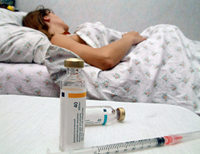
Patients with light dysentery in the midst of the disease,
flowing with adhesion of mucus and blood in feces, are prescribed one of
Next preparations: Nitrofurans (Furazolidon, Furadonin 0.1 g 4
Once a day, Ersafuril (nifuroxazid) 0.2 g 4 times a day),
Kotrimoxazole 2 tablets 2 times a day, oxychinolines (nitroxoline
0.1 g 4 times a day, Intotrix 1-2 tablets 3 times a day).
With a moderate course of dysentery, drugs are prescribed
Fluoroquinolone groups: offloxacin 0.2 g 2 times a day or
Ciprofloxacin of 0.25 g 2 times a day; Kotrimoxazole 2 tablets 2
times a day; Intotrix 2 tablets 3 times a day.
In severe dysentery, ophloxacin is prescribed 0.4 g
2 times a day or ciprofloxacin of 0.5 g 2 times a day; Fluoroquinolones
in combination with aminoglycosides; aminoglycosides in combination with
Cephalosporins.
In the dysentery of the flexner and the zone are prescribed polyvalent
Dysenteric bacteriophage. The drug is produced in liquid form and in
Acid Resistant Tablets. Take 1 hour before meals
inside 30-40 ml 3 times a day or 2-3 tablets 3 times a day.
With the easiest course of the disease compensation of liquid loss
It is carried out at the expense of one of the finished compositions (citrothukosalan,
Regidron, tour and other.). These solutions give low portions.
The amount of drilled liquid should be 1.5 times higher than the loss of it with
feces and urine.
Patients with a moderate form of diarrhea recommended
abundant drinking sweet tea or 5% glucose solution, or one of
Ready solutions (citrothukosalan, recider, tour and other.) up to 2-4
l / day.
With severe intoxication, intravenous drip is shown
Pouring a 10% solution of albumin, hemodesa and other crystalloid
solutions (trisole, lactasol, azesol, chille), 5-10% glucose solution
With insulin. In most cases, it is enough to introduce 1000-1500 ml
one or two of the named solutions to achieve significant
Improving the condition of the patient.
For binding and removing toxin from the intestine, prescribe
One of the enterosorbents - polyfepan on 1 tablespoon 3 times a day,
Activated coal 15-20 g 3 times a day, enterodez 5 g 3 times
per day, Polysorb MP 3 g 3 times a day, Smekt 1 bag 3 times in
day or other.
For neutralization of toxins, enzyme preparations are used: Pancreatins, Panzinors in combination with calcium preparations.
In the acute period of diarrhea to eliminate the spasm of colon shown
Application: hydrochloride doll (but-shp) 0.04 g 3 times a day,
Papaverin hydrochloride 0.02 g 3 times a day. With significant
Bowl syndrome is prescribed a but-sh (2 ml of 2% of the solution intramuscularly or
1-2 ml of a 0.2% solution of platofillin hydrotathered subcutaneously.
During the entire period of treatment, patients prescribe a complex of vitamins.
In order to correct the biocenosis of the intestine, biosporin is prescribed, Bactorin,
Bakutsubtil, FloniVin-BS 2 doses 2 times a day for 5-7 days.
When choosing a drug, preference should be given to modern
Complex drugs - Linex, Bifidumbacterin-Forte, Vitaflor, etc.
Preparations are prescribed in standard dosage. With good tolerability
In the period of recovery, fermented acidic and dietary
bifi- and lact-containing products that have high healing
Efficiency.
Treatment of chronic dysentery patients (recurrent and
Continuous) is carried out in infectious hospital.
Treatment
Includes:
- Fluoroquinolones Ciprofloxacin 0.5 g 2 times a day or offloxacin 0.2 g 2 times a day for 7 days;
- Immunotherapy, depending on the state of immunity - Timalin, Timogen, Levamizol, Dibazol, and DR.;
- Panzinorm, Festal, Pankreatin, Pepsin and DR.;
- elevated daose doses of vitamins;
- treatment of concomitant diseases, gliscate and protozoan intestinal invasions;
-
For the restoration of intestinal biocenosis prescribed biospurn,
Bactisporin, Linex, Bifidumbacterin-Forte, Vitaflor, Lacto Bacterin;
These drugs are prescribed in a standard dosage for 2 weeks
After etiotropic therapy simultaneously with pathogenetic means.
The prediction in the treatment of patients with dysentery is usually favorable.
than 3 days after clinical recovery (normalization
body temperature, chair, disappearance of signs of intoxication, pain in
abdomen, spasm and intestinal pain), in the absence
Pathological changes in laboratory studies.
Chemoprophylaxis in contact with patients with patients is not held.

